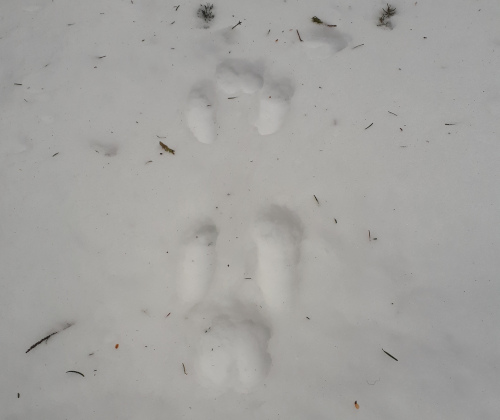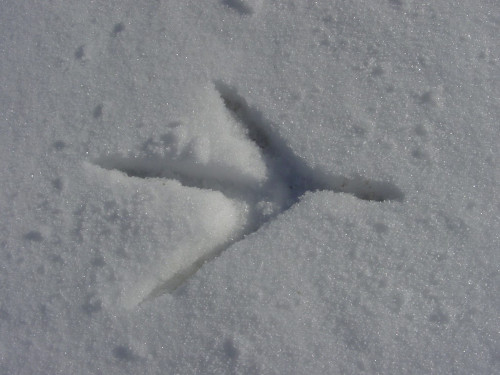Animal tracks in the snow

Rabbit
These tracks abound on our route through the Bruce Peninsula National Park. Rabbits do not hibernate, rather they spend their winters near their burrows -- dug into snow, in tree root systems, or in the cracks and crevices of the karst of the Peninsula. Their footprints through the snow are evidence of their foraging. Their diet in the winter months changes from grass and other greens to tree bark, conifer needles, and twigs.

Squirrel
You may not know that the most common squirrel species on the peninsula is in fact the rarely spotted flying squirrel! However the little tracks on the ground are left by an excitable cousin, the red squirrel. Red squirrels build up their fat stores in the autumn and spend the winter outwitting predators and foraging for the hoards they left in preparation for the scarce months. They can smell their autumn leftovers through up to four metres of snow!
Fox
Foxes prepare for the winter by growing a thick fur coat, warm enough that they can keep living life much as they do the rest of the year. That cozy coat also means a sleepy fox can curl up and have a nap in the snow, without having to return to a den each day. They spend most of winter foraging and hunting -- they're omnivores, so anything goes!
Beaver
Beaver tracks can include a print of the front paw and webbed foot, or it can appear as we most recently spotted it, as a slide through the snow. Beavers spend most of the winter inside a lodge, which can stay toasty even when the temperature outside plummets. Inside, they eat, mate, and maintain their home. They leave the lodge to chew, and stay warm on days out with a thick waterproof coat.
Deer
The coldest months find deer slowing down and seeking sheltered areas. They can stay put for days at a time in bad weather, slowing their metabolism and living off their fat stores. When on the move, they forage for twigs and greenery. A thick, dark winter coat absorbs sunlight and keeps out the cold.
Wild Turkey
You may have seen one or two or ten turkeys scrabbling across your yard, scratching their way through the snow as they search for food. Most turkeys live in groups (called rafters or flocks) through the winter, roosting together at night and foraging during the day -- sometimes alongside other animals like deer and squirrels.




